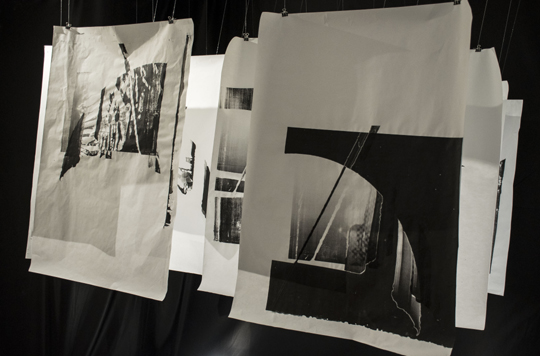Biography : Growing up, the question "What do you want to be when you grow up?" was not an easy one to answer. So after high school, I followed both of my passions: I (simultaneously) studied Astrophysics at the University of Vienna, as well as Fine Arts/Paintings at the University of Applied Arts in Vienna, where I was born and raised. Today, after Masters and PhD degrees that took me to Australia, Chile, the US and Germany, I am an astronomer as well as a visual artist, currently based in the UK, where I work as a post-doctoral researcher for the University of Nottingham - and I make, exhibit and curate art. I came to Astronomy by perceiving the Universe as very beautiful, so aesthetics has always played an important role in my science practice. As an ArtScience artists I operate where art, culture and science intersect, using both backgrounds to find or reject interdisciplinary answers to overarching questions.
What lies at the intersection of art and science?
Abstract : The pioneering astronomer Maria Mitchell marvelled: "We especially need imagination in science. It is not all mathematics, nor all logic, but it is somewhat beauty and poetry."
Both science and art are human attempts to understand and describe the world around us.
Scientists and artists may speak different "languages" - each community has their own ways of communicating, ways of expressions, levels of sharing and exchange of material - but despite the disparities of their profiles, artists and scientists have a common ground: the fundamental desire to contemplate the understanding and experience of the physical world, and a creative approach to it.
In our science driven world, we often forget that data is collected, created and processed by humans and as such, data owns an anthropomorphic quality. The arts don't need scientific data to be legitimate. The artist is not bound to a scientific goal, which permits him or her to approach material freely. In my current artistic work, I highlight human errors and mistakes by appropriating technical defects of the instruments I use in my work as an astronomer, and create new, artistic ones. In my contribution to the workshop, I will share thoughts and experiences I have made while working as a scientist, artist and curator at the intersection of the two fields, that can be broadly summarised as art and science, in an attempt to create a dialogue between equals.
 Caption: "Data with empathy", Ulrike Kuchner, silk screen on Offenbach bible paper, 2018, shown at Atlantis gallery, Bogotá, Colombia.
Caption: "Data with empathy", Ulrike Kuchner, silk screen on Offenbach bible paper, 2018, shown at Atlantis gallery, Bogotá, Colombia.
References
Snow, C.P. 1961. Two Cultures and the Scientific Revolution: Rede Lecture 1959. Cambridge: Cambridge University Press.
For re-rints e.g., http://s-f-walker.org.uk/pubsebooks/2cultures/Rede-lecture-2-cultures.pdf
Popova, M., 2006-2019, "brain pickings blog", brainpickings.org
|









